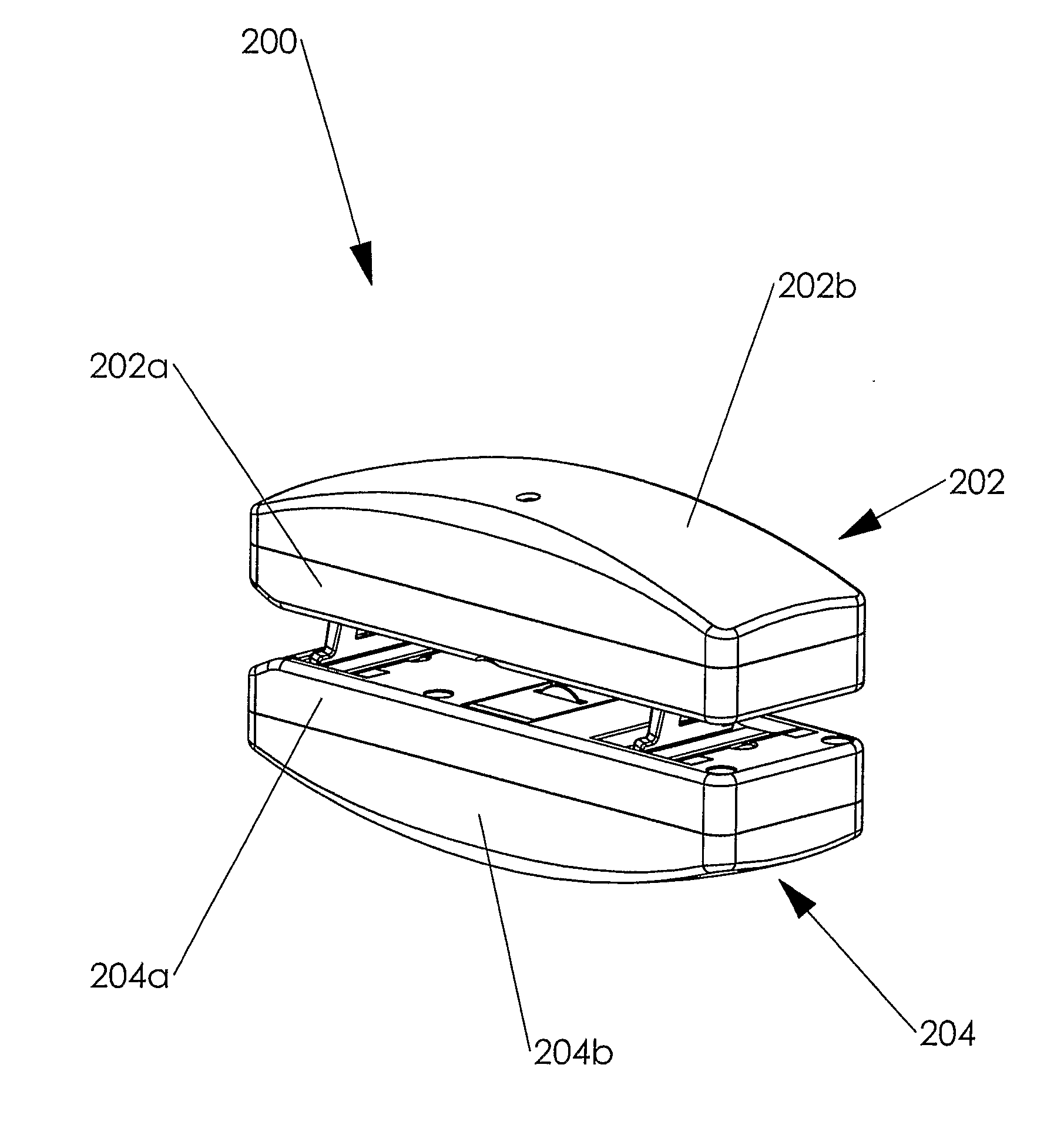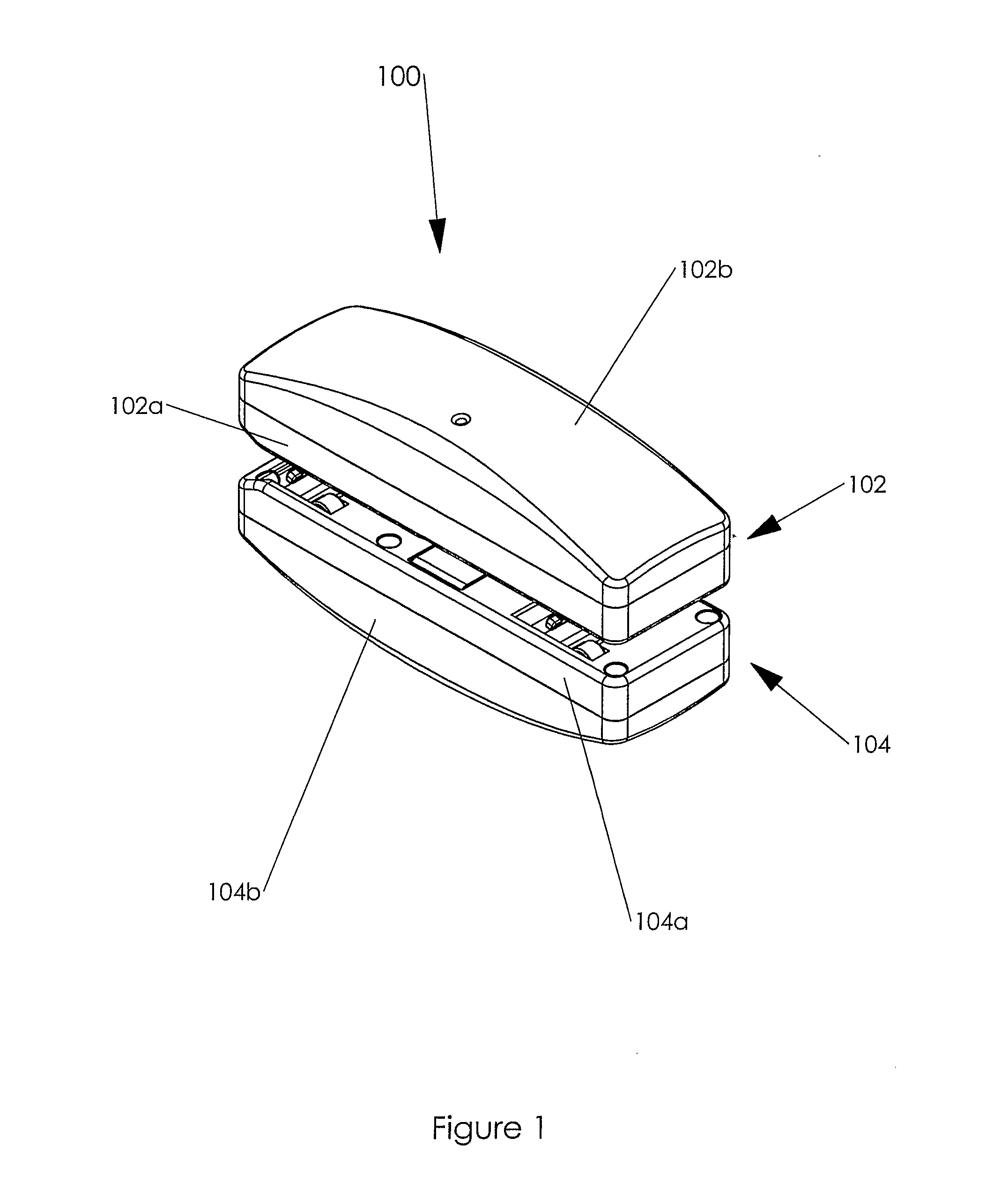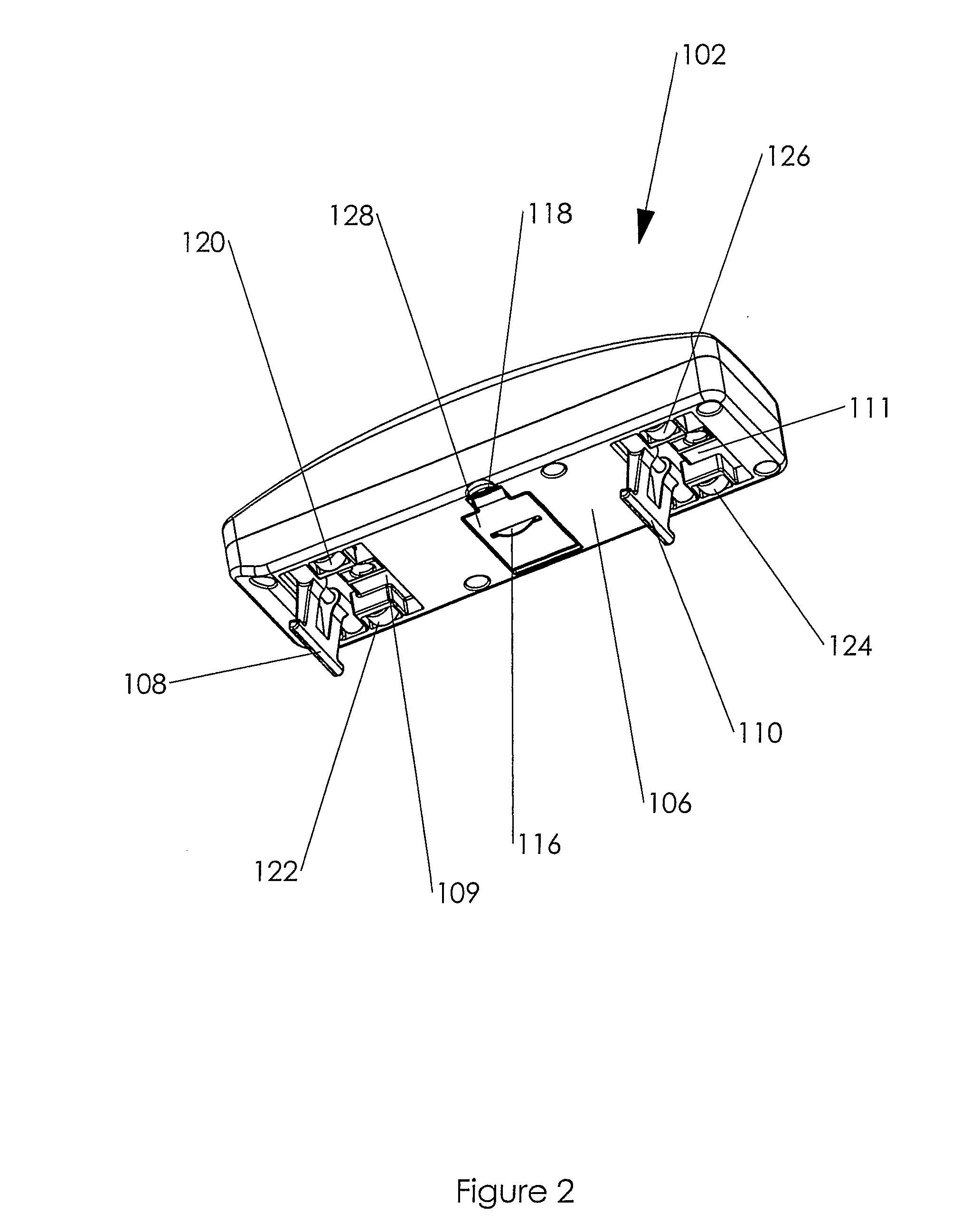Cutting Tool
a cutting tool and tool body technology, applied in the field of cutting tools, can solve the problems of inefficiency of the cutting process, inconvenient and unnecessarily laborious second cutting step, and inability to clean the two-step cutting process, so as to facilitate the user in the cutting of curved lines
- Summary
- Abstract
- Description
- Claims
- Application Information
AI Technical Summary
Benefits of technology
Problems solved by technology
Method used
Image
Examples
Embodiment Construction
[0075]Referring to FIG. 1, there is a representation of a cutting tool according to the present invention, generally designated 100. The cutting tool 100 comprises two main body parts, namely, an upper part 102 and a lower part 104.
[0076]The upper part 102 of the cutting tool comprises a main body section 102a and an outer casing 102b. Similarly, the lower part 104 of the cutting tool 100 comprises a main body section 104a and an outer casing 104b.
[0077]Although not shown in FIG. 1, the upper part 102 of the cutting tool 100 may be shaped to conform with that of a hand to facilitate the application of pressure and therefore the use of the cutting tool 100.
[0078]The upper and lower parts 102,104 are moulded from plastics material using any suitable technique known in the art.
[0079]FIG. 2 is a representation of the underside 106 of the top part 102 of the cutting tool 100. On the underside 106, there are two separating arms 108,110. The separating arms 108,110 are mounted on axles 11...
PUM
| Property | Measurement | Unit |
|---|---|---|
| Depth | aaaaa | aaaaa |
| Magnetism | aaaaa | aaaaa |
Abstract
Description
Claims
Application Information
 Login to View More
Login to View More - R&D
- Intellectual Property
- Life Sciences
- Materials
- Tech Scout
- Unparalleled Data Quality
- Higher Quality Content
- 60% Fewer Hallucinations
Browse by: Latest US Patents, China's latest patents, Technical Efficacy Thesaurus, Application Domain, Technology Topic, Popular Technical Reports.
© 2025 PatSnap. All rights reserved.Legal|Privacy policy|Modern Slavery Act Transparency Statement|Sitemap|About US| Contact US: help@patsnap.com



